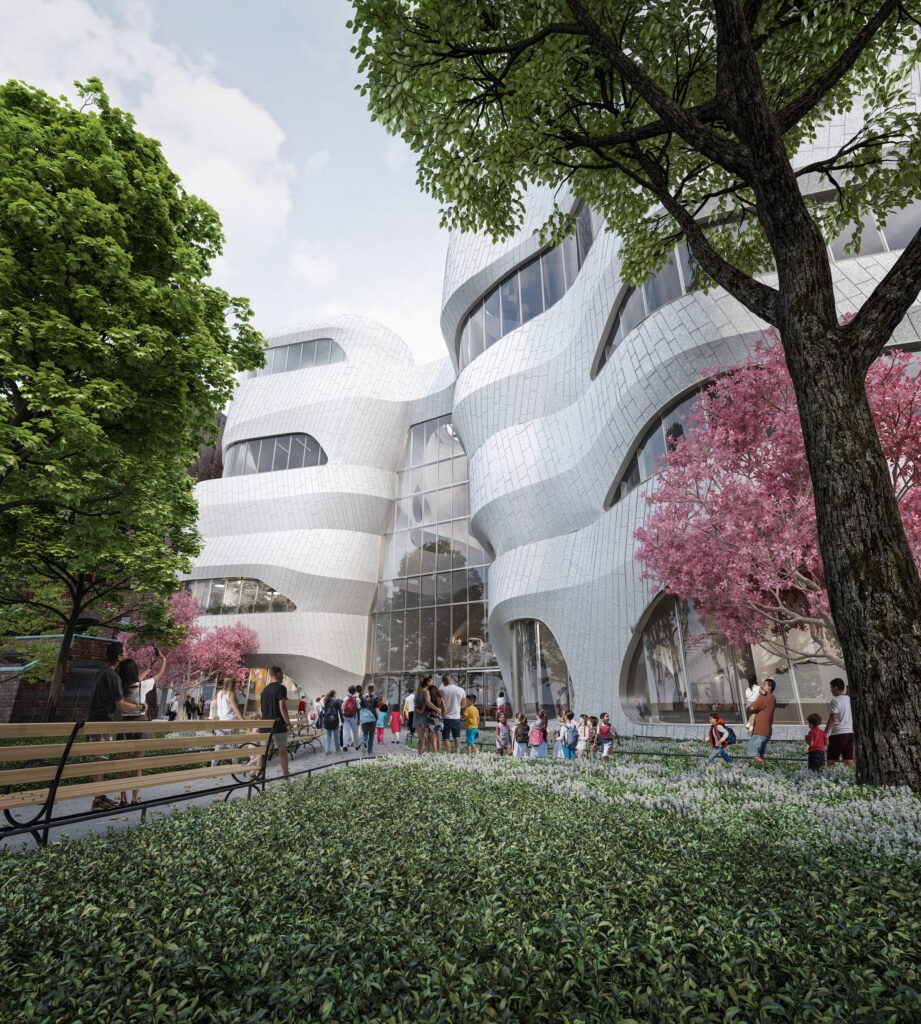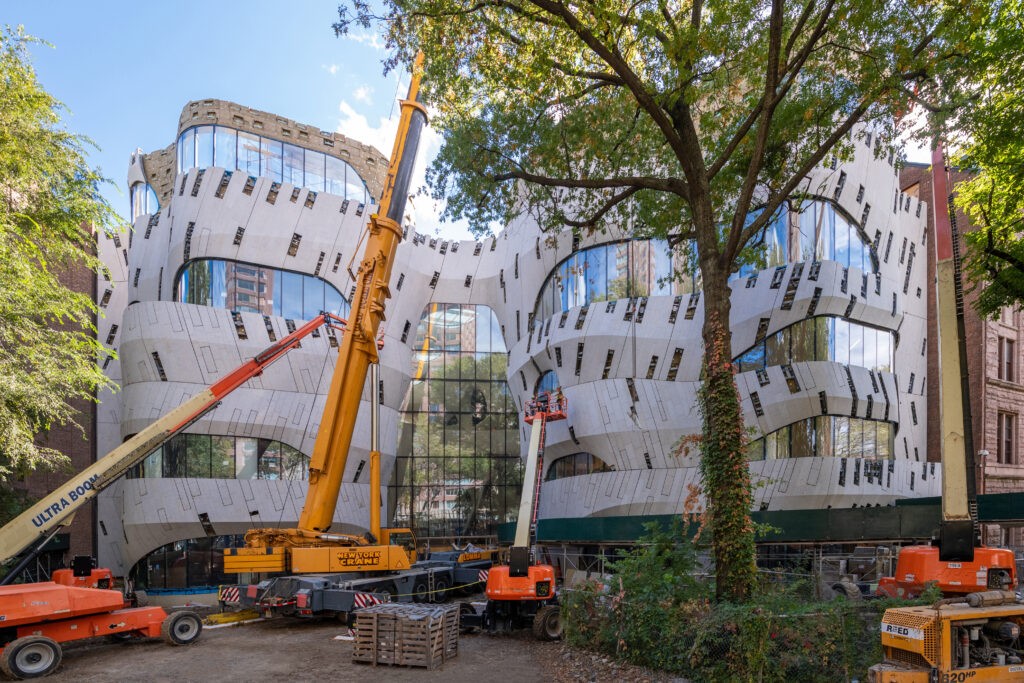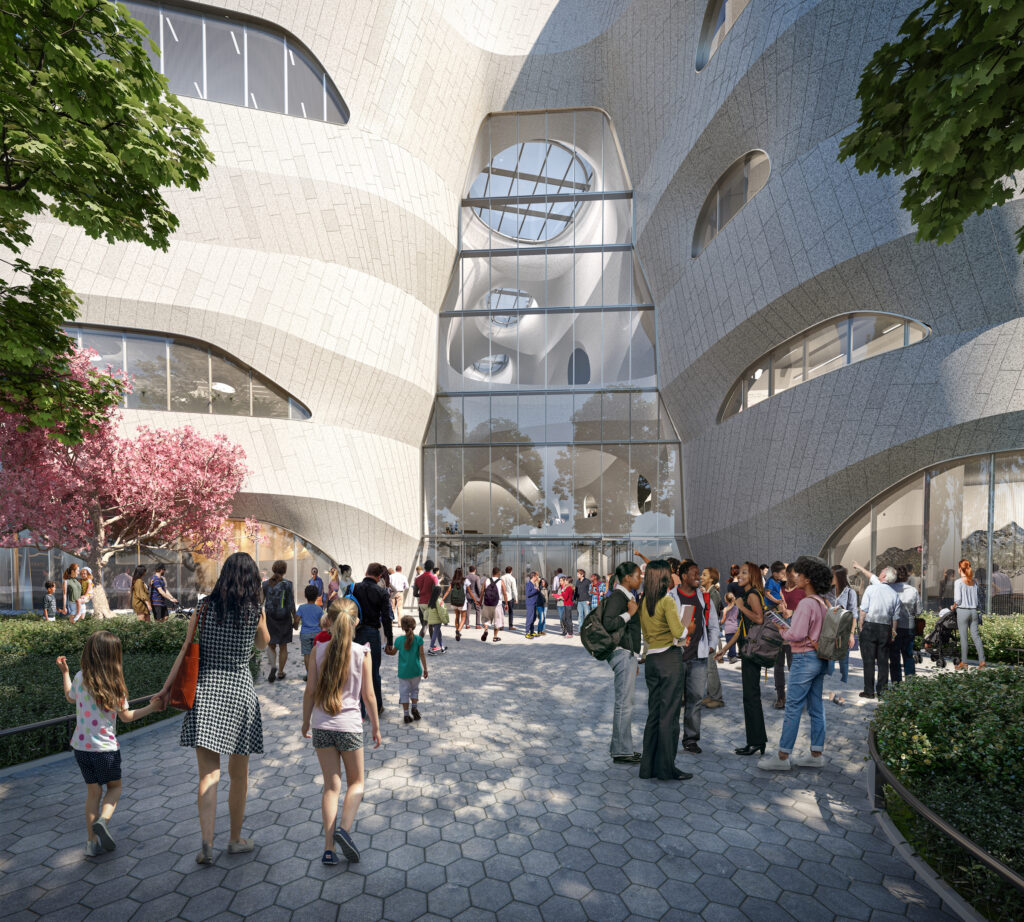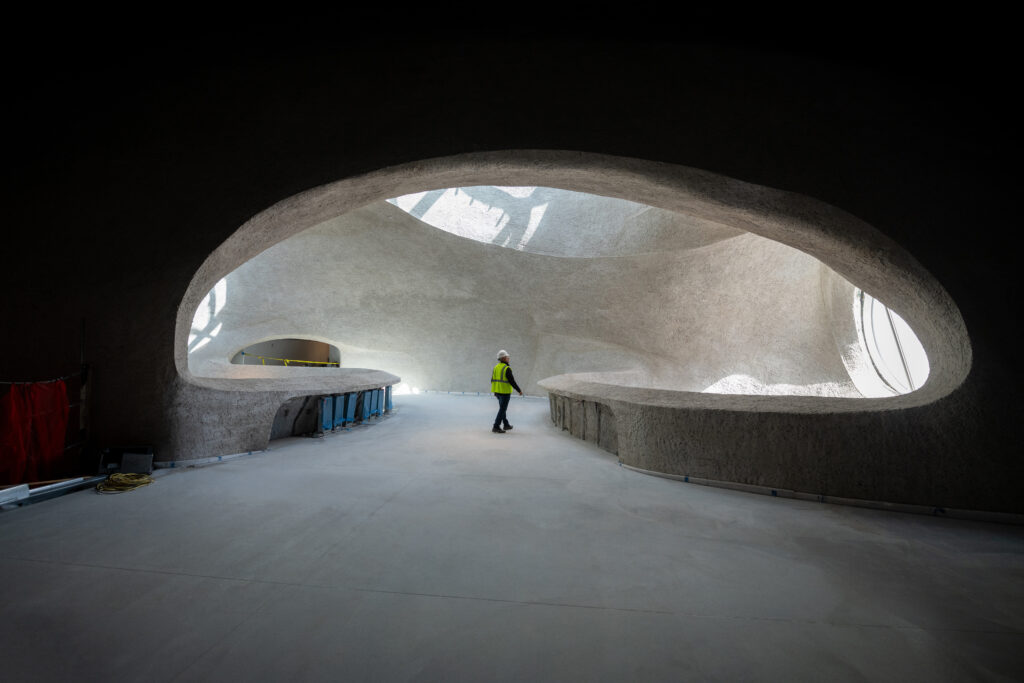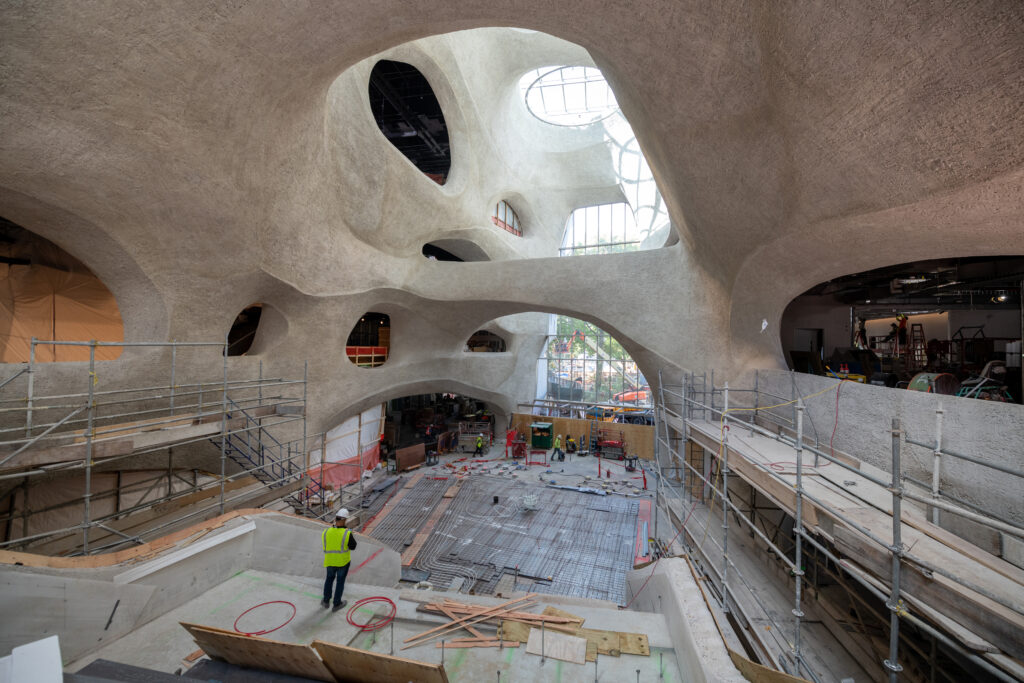The American Museum of Natural History revealed how the vision for its Richard Gilder Center for Science, Education, and Innovation is taking shape in steel, glass, and artfully shaped “shotcrete,” as the Museum released new in-process photographs showing the spaces that will welcome visitors when the Gilder Center opens to the public on February 17, 2023.
With architecture designed by Studio Gang, the international architecture and urban design practice led by Jeanne Gang, the 230,000-square-foot Gilder Center project invites exploration of the fascinating, far-reaching relationships among species that comprise life on Earth and reveals connections across the Museum’s rich collections, trailblazing research initiatives, educational programs, and exhibition galleries. Physically, the Gilder Center connects many of the Museum’s buildings, creating a continuous campus across four city blocks as envisioned more than 150 years ago. Intellectually, it provides a dramatic embodiment of one of the Museum’s essential messages: all life is connected.
Museum President Ellen V. Futter said, “In a time when the need for science literacy has never been more urgent, we are thrilled and proud to be nearing the long-awaited opening date for the Richard Gilder Center for Science, Education, and Innovation, a major new facility that will transform both the work of our museum and the cultural landscape of New York City. In its exhibits and programs, and in the astonishing architecture that presents them to the world, the Gilder Center weds evidence-based thinking and transporting experiences that capture exploration and innovative scientific discovery.”
The Gilder Center, with exhibition design by Ralph Appelbaum Associates, will feature:
- The Kenneth C. Griffin Exploration Atrium, a four-story civic space that serves as a new gateway into the Museum from Columbus Avenue, opening onto Theodore Roosevelt Park and creating a visitor path to Central Park West. The space’s elegant, dramatic curves and recesses will reveal the Gilder Center to visitors and encourage exploration.
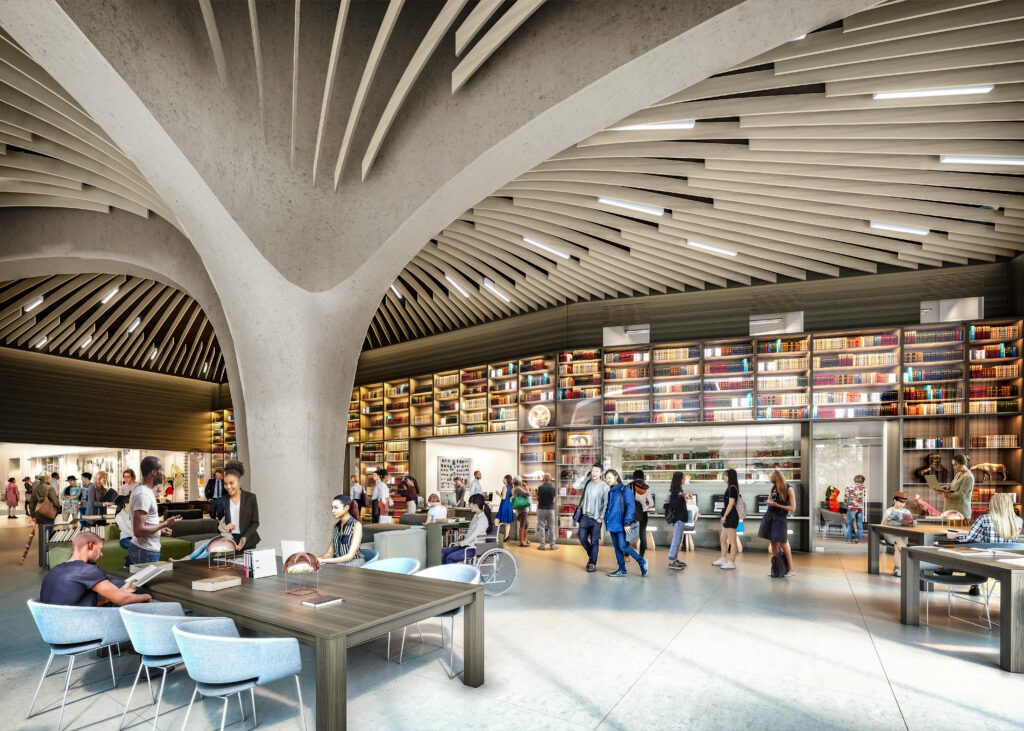
- The David S. and Ruth L. Gottesman Research Library and Learning Center, a dynamic hub that connects visitors with the Museum Library’s unparalleled resources. Featuring sweeping views to the west, the fourth-floor facility will be open to the public and include a new scholars’ reading room, exhibition alcove, group study room, and space for visitors to stop by during the day to read or browse, as well as to attend organized programming or view collection displays that, among other things, share the history of science through holdings such as the Museum’s Rare Book Collection.
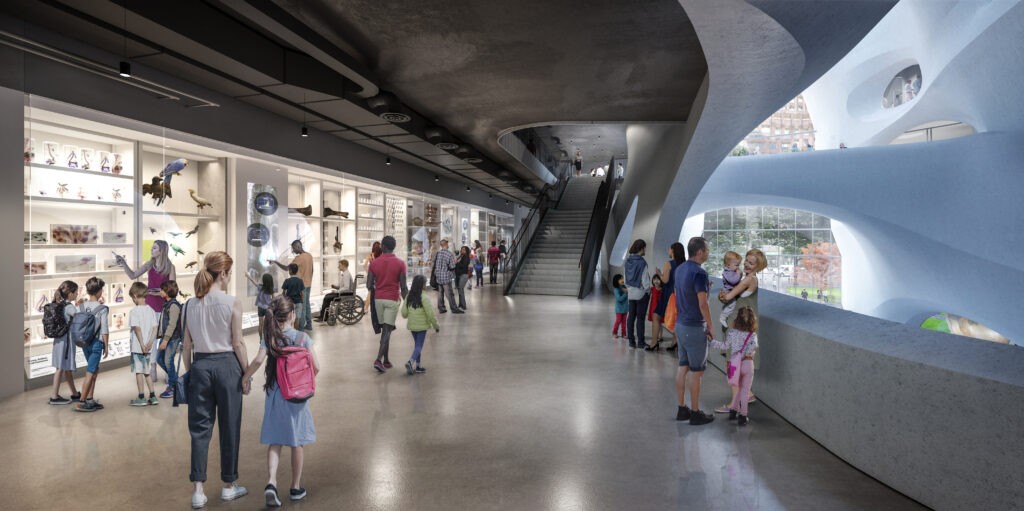
- The five-story Louis V. Gerstner, Jr. Collections Core, a vertical collections facility featuring three stories of floor-to-ceiling exhibits representing every area of the Museum’s collections in vertebrate and invertebrate biology, paleontology, geology, anthropology and archaeology, from fossil tracks to trilobites and antlers to pottery. A series of media columns will feature stories of how scientists analyze various collections, and glass panels will provide glimpses into working collections areas at the heart of the Collections Core. All told, the Gilder Center will house close to 4 million scientific specimens, approximately 12 percent of the Museum’s collection. The collections and exhibits on the first and second floors of the Collections Core are supported by the Macaulay Family Foundation.
- The 5,000-square-foot Susan and Peter J. Solomon Family Insectarium, the first Museum gallery in more than 50 years dedicated to the most diverse — and a critically important — group of animals on Earth. Featuring live and pinned insects and graphic and digital exhibits, the Insectarium will feature many of the 30 orders of insects, helping visitors explore the vital roles that insects play in different ecosystems. Oversized models of honeybees mounted overhead will draw visitors through the gallery toward a monumental hive at the west end. Along the way, visitors will pass under a transparent skybridge built as a route for live leafcutter ants in one of the world’s largest leafcutter ant displays. Touch screens will provide displays of insects of the boroughs of New York City, and a sound gallery will surround visitors with the music of Central Park’s insects and offer the ability to feel the corresponding vibrations.
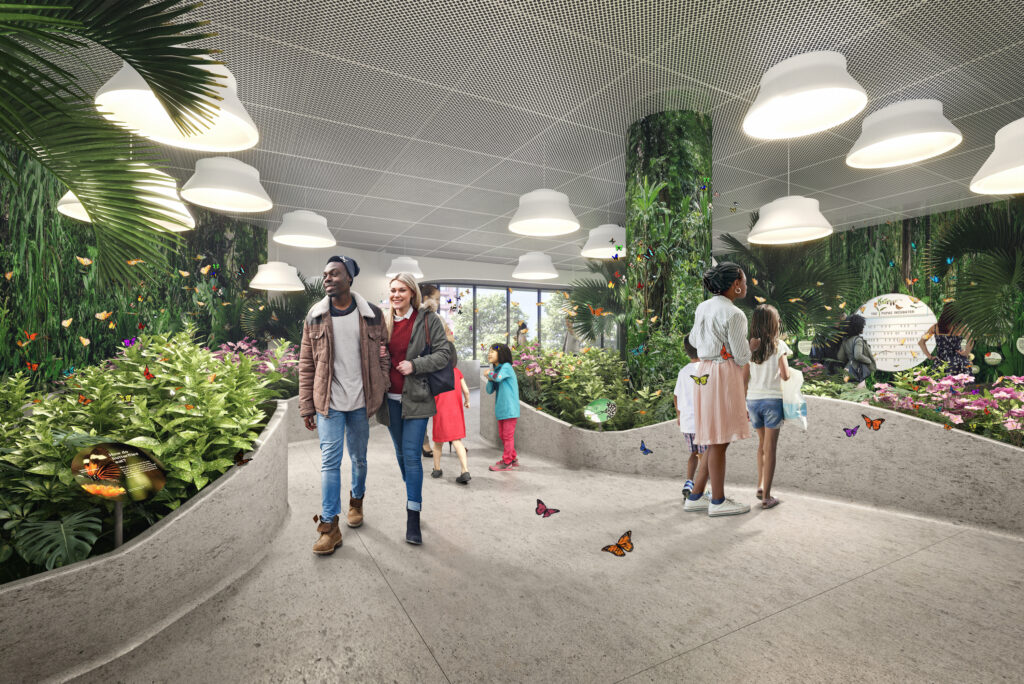
- The year-round, 3,000-square-foot Davis Family Butterfly Vivarium, where visitors can mingle with up to 80 species of free-flying butterflies — and sometimes experience one landing on them. This gallery will offer opportunities to observe butterflies, one of nature’s vital environmental barometers, in various micro-environments ringing a meandering route. Visitors will be able to identify the butterflies they see by referring to an ID board featuring an illustrated card for each species in flight, updated daily. With the assistance of staff, visitors will also be able to view butterflies through a digital microscope.

- Invisible Worlds, an extraordinary 360-degree immersive science-and-art experience that offers a breathtakingly beautiful and imaginative yet scientifically rigorous window into the networks of life at all scales. Designed by the Berlin-based Tamschick Media+Space with the Seville-based Boris Micka Associates, who worked closely with data visualization specialists and scientists from the Museum and around the world, Invisible Worlds will be shown in a custom venue that builds on the Museum’s long tradition of transporting visitors across the world via its iconic habitat dioramas and throughout the universe in its science-visualization-driven Hayden Planetarium Space Shows. Visitors will pass through an introductory gallery designed by the Museum’s Exhibition Department that flows into a wide space as large as a hockey rink, with 23-foot-high walls that surround visitors with projections at all scales and mirrors at ceiling height suggesting infinity. A looping 12-minute immersive experience will reveal that all life on Earth is interconnected: from the building blocks of DNA to ecological interdependencies in forests, oceans and cities to communication made possible by trillions of connections within the human brain. At key moments, visitors will become part of the story as their own movements affect the images of living networks depicted all around.
- In the Museum’s most comprehensive addition and modernization of educational space in decades, the Gilder Center includes 18 newly built, renovated or repurposed classrooms designed to meet the specific needs of formal education as well as the needs of families and adult learners. These spaces include a zone for Middle School Learning, supported by Josh and Judy Weston, that will be available for middle-grade learners, including participants in the Urban Advantage science initiative for New York City public schools; a zone for High School Learning, which will feature a Learning with Data classroom and a biology and chemistry classroom; and a zone for College and Career Readiness, with spaces dedicated to promoting career paths associated with STEM and building on the Museum’s current work in programs like the Museum Education and Employment Program (MEEP) for college students and the Science Research Mentoring Program (SRMP) for high school students. Adjacent spaces in the existing Museum complex include the Michael Vlock Family Learning Zone, newly renovated classrooms supporting young children and families, and a zone for Teacher Learning repurposed for Museum programs for teacher professional development. These classrooms will allow the Museum to serve students and teachers in new ways that align with national educational standards and offer high-quality science, technology, engineering, and math (STEM) learning relevant to today’s students for successful college and career trajectories.



